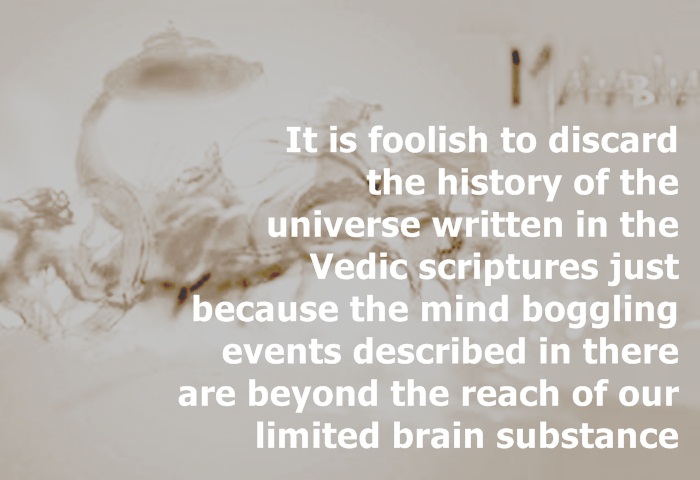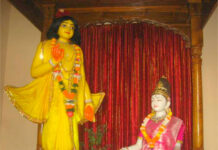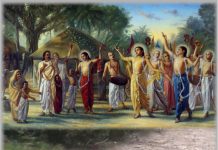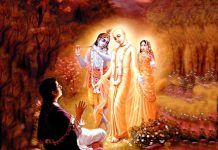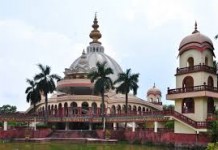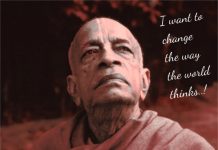Distortion of history is not unknown to India, nor to the world. Whoever ruled the land, be it authoritarian kings or democratic governments, compromising historical records or rewriting of history has quite often been on their agenda. This has kept modern historians and archaeologists baffled.
What makes this 1000s of years old structure a staggering architectural marvel is that it is built by carving a mountain, from a single block! The first and natural series of questions researchers and archaeologists ask when they discover such an astonishing structure is, when was it built, who built it and how was it built? They go back to books of history and come up with their own theories. All fine. However, what makes their life difficult is, when the structure is mind-blowing, like this one at the Ellora caves in India.
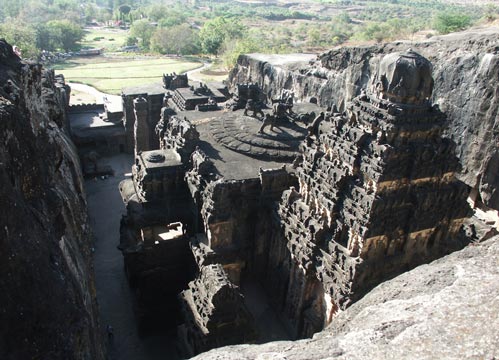
“The Kailas complex, cave 16, is the largest monolithic sculpture in the world. In the courtyard, which is 81m long and 47m wide, the main temple rises 33m in height and is surrounded by smaller temples and shrines and two victory pillars which are 16m high. The area covers twice the area of the Parthenon in Athens, is 1.5 times as high, and involved the removal of 200,000 tons of rock. It has many resemblances in style and plan with the Virupaksha temple at Pattadakal, but is twice the size and sculpted out of the rock instead of being built with blocks. It is interesting that cave 30, also called the small Kailas temple, is unfinished. One can clearly see that work started from the top, because the top was already finished. The puzzling thing is that cave 30 is reckoned a Jain temple — it does contain Jain carvings — and that the Kailas temple is considered to be the work of Hindus. Therefore, besides the difficulties of dating these cave temples, it is also hard to tell who excavated them. Some caves now have Buddhist themes. These may have been added at a later time, however, to caves which were originally Hindu or Jain, because Hinduism and Jainism are much older traditions than the Buddhism of Gautama.” (Source)
There are different opinions as to who built it. Some say it was built under the patronage of King Shubhtung Krishna I (757-72 CE) and others say it was the work of an architect named Kokasa who carved this temple in order to please the queen of the Rashtrakuta king of Elu. Some historians suggest it was built in 8th century, some say it was 9th, while others say it’s a work of different kings during different centuries.
Here is where the modern history gets murky. We have seen in India how after mugals invaded India they destroyed many temples and renamed some magnificent structures after altering them. This particular cave temple at Ellora doesn’t seem to be a victim of such acts but it is likely that what is present today is a work of more than one kings.
Author Coen Vonk observes that modern archaeologists tend to ignore some important considerations in order to maintain a particular theory:
“Like Hinduism, Jainism also assigns enormous time periods to mankind, and according to tradition their line of 24 teachers or tirthankaras started with Rishaba who lived more than 6.5 million years ago, continuing to the 24th teacher Mahavira who may have been a contemporary of Gautama Buddha in the 6th century BCE. Why should we not consider these ancient teachings more closely, instead of dismissing them as fables? Archeologists have set up a chronology in which there is no room for considering such ancient dates because the entire framework of their timeline would collapse.” (Cave Temples of Ancient India)
Another interesting observation is “there is a perforated window in the west wall [of cave 15, a Hindu cave] over which is engraved a Sanskrit inscription in the Brahmi script of the eighth century. It is, however, incomplete and much of it has been damaged due to weathering. It gives the genealogy of the Rashtrakuta dynasty, from the founder Dantivarman (c. 600-30) and records the visit of Dantidurga (752-7) to the cave. It can, therefore, be placed in the middle of the eighth century. — Ellora, pp. 36-7 -*Ellora, M. K. Dhavalikar, 2003, p. 7.” (Source)
Whatever the truth may be in case of this astounding Kailash temple, one thing is indisputable – what we know as Hinduism today is the oldest religion on the planet. It is also known that Hindu scriptures, known as the Vedas, are written in Sanskrit language and that Sanskrit script and different deities described in Vedas are found in many parts of the world. Not only that, both Rishabha deva, who Jains worship, and Lord Buddha, the founder of Buddhism, are mentioned in Vedic scriptures with descriptions predicting their time of appearance and activities. This is another proof that Vedas perfectly know both past and future.
Puranas are part of Vedic scriptures and refer to history of the universe dating back billions of years. Correct! In fact, they talk in terms of yuga cycles. The shortest of yuga is the present yuga, called Kali yuga, and its duration is stated to be 432,000 earthly years. What we learn in history today is like those “breaking news” compared to the history described in these scriptures, especially Puranas. It is unfortunate, or rather ridiculous, that our historians still call these books mythology.
“The actual history of mankind is not the history that we study today in schools and universities. The sanskrit word “Purana” literally means very old. For example, Maha Bharat is one such purana describing historical events of ancient India, also known as Bharat, which covered a much larger geographical area of the Earth than it does today. Naming such history as mythology does not change its actual nature.”(Questions on the submerged city of Dwarka haunts archeologists)
In reality, if we look at the history from Vedic point of view, none of the jaw-dropping structures on this and other planets will confuse us. For example, archaeologists go on arguing as to who built those gigantic and mystical structures around the world, but if they take into consideration that, according to Vedic scriptures, there have been highly advanced civilizations in the past millenniums, and that the size and strength of human beings in previous ages have been enormous compared to today’s scenario, there wouldn’t exist questions like – “how did they place that huge mountain block at that height?”
For example, the famous Ramayana, which is the history of Lord Rama’s pastimes during Treta yuga (more than 1.2 billions years ago), mentions that the leader of Lord Rama’s monkey soldiers, Angad, was as tall as 13 palm trees! It also says Ravana once lifted mount Kailash. Mahabharat describes that Bhima had the strength of 10,000 elephants! Hmm.. what more, Vishnu purana mentions that Hiranyakashipu ruled the universe and controlled all planets, and yet more, Srimad Bhagavatam states that a demon named Hiranyaksa lifted our planet Earth and hid it at the bottom of garbhodaka ocean, which is situated at the bottom of this universe.
Mythology? Certainly NOT to those who can think better and broader. Even scientists are getting closer to accepting Vedic science as an authority so why not historians and archaeologists? Indeed, as correctly pointed out in this article, calling Vedic history mythology is the biggest myth of all times.
